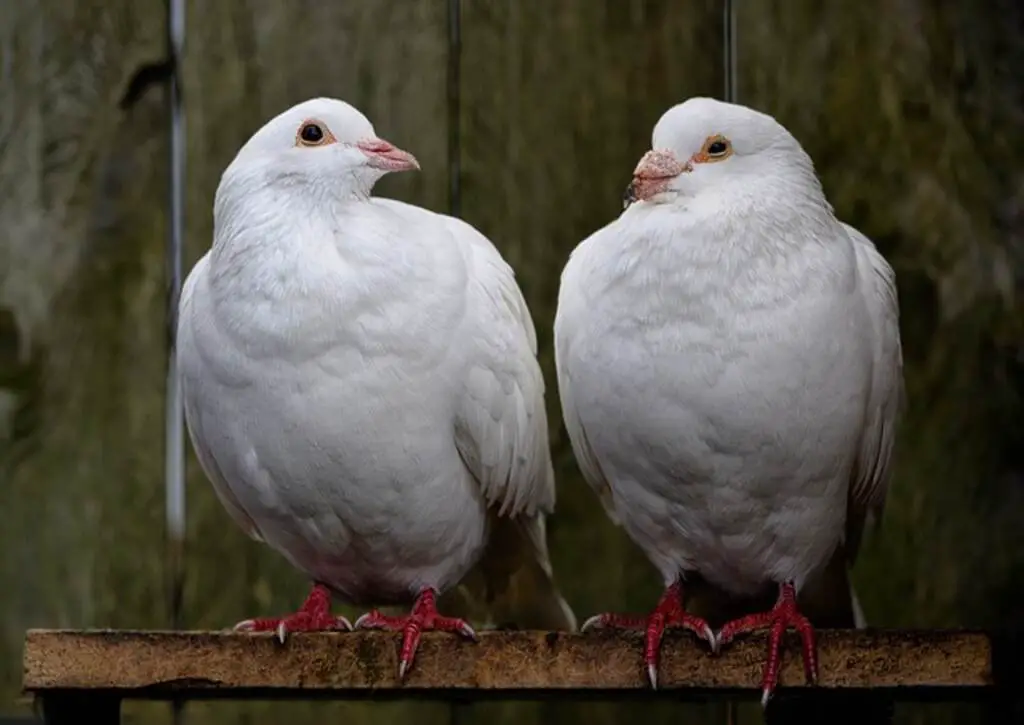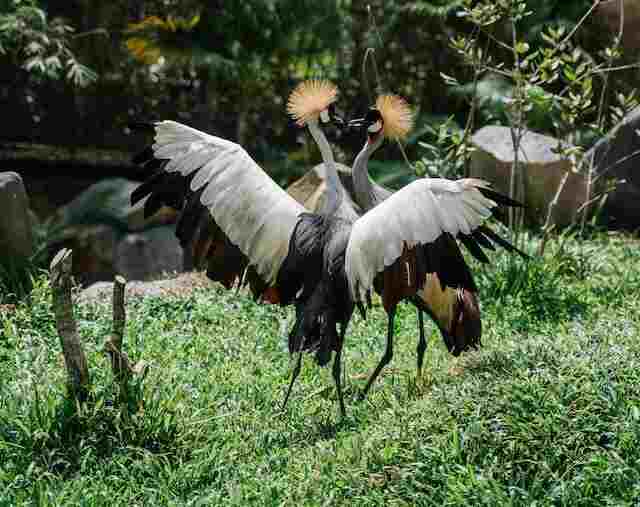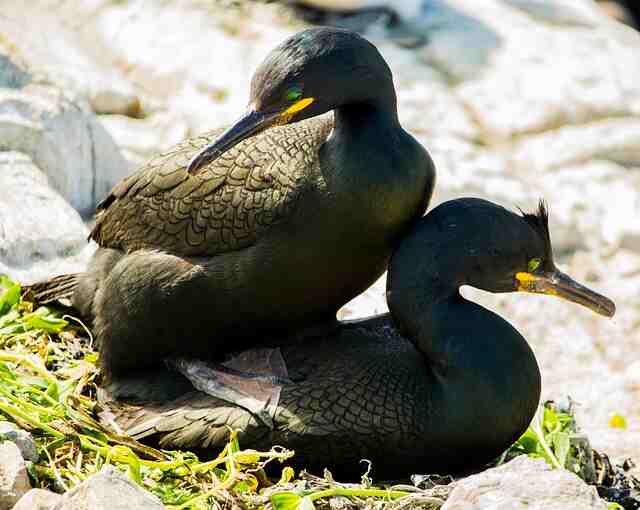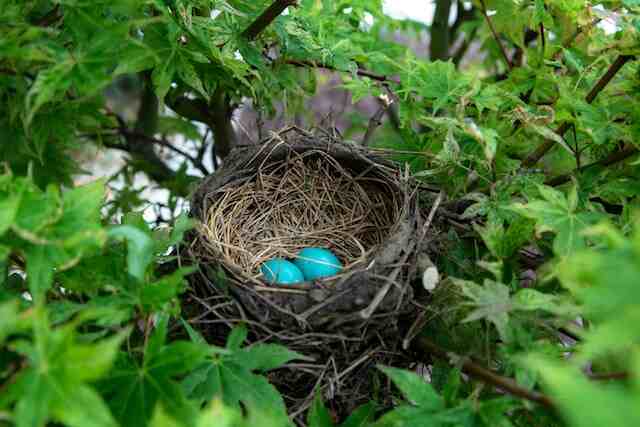Bird mating is an essential process for the survival of bird species. It plays a crucial role in maintaining genetic diversity, population growth, and the overall ecological balance. Understanding the intricate details of bird mating is essential for researchers, conservationists, and bird enthusiasts alike.
In this article, we will delve into the world of bird mating, exploring the anatomy, behaviors, and social dynamics of this fascinating process. Our aim is to provide a comprehensive overview of the topic, answering common questions and shedding light on lesser-known aspects of bird mating.
Table of Contents
- 1 How Do Birds Mate?
- 2 The Mechanics of Bird Mating
- 3 The Role of Bird Reproduction
- 4 Mating Behaviors and Social Dynamics
- 5 Bird Mating Displays
- 6 Breeding Season and Mating Frequency
- 7 Inter-Species Mating and Hybridization:
- 8 The Cultural Significance of Birds and Bird Mating in Human Societies
- 9 Common Questions about Bird Mating
- 9.1 How can you tell if birds are mating?
- 9.2 How do birds mate without external genitals?
- 9.3 How long do birds mate for?
- 9.4 Do all birds mate for life?
- 9.5 How often do birds mate?
- 9.6 Do birds have a mating season?
- 9.7 Do male birds incubate eggs?
- 9.8 Can birds lay eggs without mating?
- 9.9 How long is a bird pregnant?
- 9.10 Do birds get pregnant bellies?
- 9.11 How do birds attract mates?
- 9.12 Do birds mate with other species of birds?
- 9.13 Do birds cheat on their mates?
- 9.14 Can birds mate with other types of animals?
- 9.15 What is the purpose of bird mating displays?
- 10 Conclusion
- 11 Author
How Do Birds Mate?
Birds mate by bringing their cloacas (vent openings that release waste and sperm/eggs) together in a process called a “cloacal kiss.” During this brief moment, sperm from the male is transferred to the female’s cloaca. The male’s sperm then fertilizes the female’s eggs as they pass through her reproductive system.
The actual mating process can vary depending on the bird species, with different mating positions and behaviors. Factors such as competition and mate choice also influence bird mating behavior.
Crows are one of the most intelligent and fascinating bird species, with a unique anatomy that allows them to thrive in various environments. To understand crow mating, it is crucial to comprehend their anatomy, particularly their reproductive system.
Cloaca and Its Role in Bird Mating:
The cloaca is a multi-functional opening that serves as the exit point for digestive, urinary, and reproductive systems in birds. Although most male birds lack a penis, some species like ducks and geese possess a penis that is housed within the cloaca. During mating, male and female birds bring their cloacas together in a process called a “cloacal kiss,” and the male’s penis is inserted into the female’s cloaca for sperm transfer. This makes the cloaca a critical anatomical feature for bird reproduction and survival, as it is also the opening through which eggs are laid.
Differences in Male and Female Bird Anatomy
Male and female crows have subtle differences in their reproductive anatomy. Female crows have a pair of ovaries, while male crows have a pair of testes. The testes are responsible for producing and storing sperm, which are then transferred to the female during mating.
On the other hand, the female reproductive system includes an oviduct that leads from the ovary to the cloaca, where the egg is fertilized and laid. The cloaca plays an essential role in bird mating, as it is the opening where the reproductive and excretory systems meet.
During copulation, the male and female birds briefly touch their cloacae together to transfer sperm from the male to the female. This mechanism is also known as the “cloacal kiss.” Understanding the anatomy and physiology of bird reproduction can provide insight into the intricacies of bird mating behaviors.
| Cloaca in Birds | Information |
|---|---|
| Function | Multi-purpose opening for digestive, urinary, and reproductive systems |
| Presence of penis | Most male birds do not have a penis, but some species like ducks and geese do have a penis that is housed within the cloaca |
| Mating process | During mating, the male and female birds bring their cloacas together in a process called a “cloacal kiss” and sperm is transferred |
| Egg laying | The cloaca is also the opening through which eggs are laid |
| Importance | Crucial anatomical feature for bird reproduction and survival |
The Mechanics of Bird Mating
Birds have a unique reproductive system that involves the transfer of sperm from the male to the female through an opening called the cloaca. The cloaca is an all-purpose opening found in both male and female birds that is used for urination, defecation, and reproduction.
Mating Process
The mating process starts with courtship behavior, where the male tries to attract the female through displays of plumage or singing. Once the female accepts the male, they engage in a series of mating behaviors that can vary depending on the species.
Mating Positions and Behaviors
Different bird species have different mating positions and behaviors. For example, some birds mate while perched on a branch or a nest, while others mate while in flight. Some birds engage in elaborate courtship rituals, while others simply mate with a quick cloacal kiss.
Male birds often mount the female from behind and assume a cloacal kiss position. During this position, the male and female birds press their cloacas together, allowing for the transfer of sperm. The sperm is then stored in the female’s reproductive tract until it is needed to fertilize an egg.
The Role of Bird Reproduction
The reproductive process is vital to the survival of bird species. Understanding the intricacies of bird reproduction, from the formation of eggs to the development of chicks, provides insight into the challenges birds face to perpetuate their species. In this section, we will delve into the role of bird reproduction and explore the various factors that contribute to successful reproduction.
How Birds Reproduce and Lay Eggs
Birds reproduce sexually, with a male bird transferring sperm to a female bird’s cloaca during mating. The cloaca is the opening at the end of the bird’s digestive and reproductive tracts, which allows for the transfer of both waste and reproductive fluids.
After fertilization, the female bird’s body begins to produce an egg. The egg passes through the oviduct, where it is coated in layers of albumen (egg white) and membranes before the hard shell is added. Once the egg is fully formed, the female bird lays it and begins the incubation process.
Duration of Bird Pregnancy and Incubation Periods
Unlike mammals, birds do not carry their developing embryos inside their bodies. Instead, the eggs are laid and incubated outside the body. The incubation period for bird eggs varies depending on the species, but is typically around 2-4 weeks.
During the incubation process, the parent birds take turns sitting on the eggs to keep them warm and protected. Some species, like crows, may also use communal nesting sites where multiple birds take turns incubating and caring for the eggs.
Overall, bird reproduction is a complex process that involves the transfer of sperm, the formation of eggs, and the incubation and hatching of young. Understanding these processes is crucial for conservation efforts and the survival of bird populations.
| Topic | Information |
|---|---|
| Reproduction process | Birds reproduce sexually, with the male bird’s sperm fertilizing the female bird’s egg. |
| Egg laying | Female birds lay eggs, which can range from a few to dozens per breeding season depending on the species. |
| Incubation period | The incubation period varies by species but generally lasts from 10 to 50 days. During this time, the male or female bird (or both) will sit on the eggs to keep them warm and help them develop. |
| Hatching | When the eggs are ready to hatch, the chicks will break through the shell using an egg tooth. The parents will help the chicks out of the nest and care for them until they are ready to leave. |
| Parental care | Depending on the species, both parents may share the responsibilities of incubation, feeding, and protecting the chicks. Some birds, such as crows, may also receive help from other birds in their group, known as cooperative breeding. |
| Reproductive success | The success of a bird’s reproductive efforts depends on a variety of factors, including availability of resources, nest site selection, and interactions with predators and other birds. A successful breeding season can lead to the growth and stability of a bird population, while a poor breeding season can have the opposite effect. |
Mating Behaviors and Social Dynamics
Crows are highly social birds that form tight-knit family groups. Within these groups, mating behaviors and social dynamics play a crucial role in the survival of the species.
Overview of Mating Behaviors
While some bird species mate for life, crows are known for their promiscuous mating behaviors. Both males and females engage in extra-pair copulations, meaning they mate with individuals outside of their long-term pair bond. This behavior can serve to increase genetic diversity within the population and ensure the survival of the species in changing environments.
Relationship between Mating Behavior and Social Dynamics
Crows live in complex social hierarchies where individuals vie for dominance and status. Mating behaviors are intertwined with these social dynamics, as dominant individuals may have more access to potential mates and be more successful in their breeding efforts. However, lower-ranking birds may also engage in extra-pair copulations as a way to increase their reproductive success.
Factors Influencing Mating Behavior
Competition and mate choice are two primary factors that influence crow mating behavior. Males may compete for access to females, and females may choose their mates based on genetic quality or the resources that the male can provide. Additionally, environmental factors such as food availability and population density can also play a role in crow mating behavior.
Bird Mating Displays
Birds engage in elaborate and often fascinating mating displays to attract potential mates. These displays can vary widely across species and can include intricate dances, colorful plumage, and complex vocalizations. In this section, we will explore the fascinating world of bird mating displays.
Bird Mating Displays
Birds use a variety of displays to attract mates, and these displays can vary greatly between species. One of the most impressive displays is performed by male crows, who exhibit intricate aerial maneuvers to capture the attention of females. These maneuvers can include somersaults and dives that showcase their agility and strength.
In addition to these physical displays, birds may also use visual and auditory cues to attract mates. For instance, some species have bright and colorful plumage, while others have unique physical traits that make them stand out. Birds may also use their songs and vocalizations to communicate their fitness to potential mates.
Examples of Different Mating Displays in Various Bird Species
Different bird species have their own unique mating displays. For example, male peacocks display their beautiful, colorful tails in an elaborate fan, while male birds of paradise use bright colors and unique dance moves to impress females. Some birds also use gifts, such as twigs or other small objects, to impress potential mates.
Crows, which are known for their intelligence and complex social behavior, have also been observed displaying unique behaviors during mating season. In addition to their aerial displays, male crows have been known to bring gifts such as food or shiny objects to females in an attempt to win their affections.
The Role of Bird Song in Mating Displays
Bird songs play a crucial role in the mating displays of many bird species. These songs can serve as a form of communication between potential mates, conveying information about the singer’s fitness, territorial boundaries, and reproductive status.
Male birds typically produce more elaborate and intricate songs during the breeding season to attract females and establish their dominance over competing males.
In some species, such as the Australian lyrebird, males use their impressive vocal abilities to mimic the songs of other bird species, as well as sounds from their environment, such as car alarms or chainsaws.
The ability to sing complex songs and mimic sounds may increase a male’s chances of attracting a mate and passing on his genes to the next generation.
Breeding Season and Mating Frequency
Breeding season and mating frequency are critical components of the life cycle of birds. Environmental cues such as temperature and daylight length play an essential role in triggering breeding season. In many bird species, breeding season is often accompanied by an increase in mating frequency.
For instance, the breeding season for crows typically starts in late winter or early spring, during which males engage in elaborate courtship displays to attract females. These displays are characterized by a range of behaviors, including puffing up their feathers, hopping around, and making a variety of calls.
During the breeding season, food availability can also influence the mating frequency of birds. Some bird species, such as the Arctic Tern, can breed twice a year due to the abundance of food during the summer months. Comparing the mating frequency across different bird species can help us better understand the factors that influence bird mating behavior.
Factors Influencing Mating Frequency
The relationship between food availability and mating frequency in birds is complex and multi-faceted. Some bird species may have a higher mating frequency in times of abundant food resources, as they have more energy to invest in reproduction. In contrast, other bird species may have a lower mating frequency during times of plenty, as their focus may shift towards raising offspring.
Climate can also have a significant impact on mating frequency in birds. For example, some bird species may adjust their breeding season to coincide with peak food availability or to avoid extreme weather conditions. In other cases, environmental factors such as drought or unpredictable weather patterns may result in a decrease in breeding frequency or a delay in the start of the breeding season.
Furthermore, factors such as predator abundance, habitat quality, and competition for mates can also influence bird mating frequency. Overall, a variety of ecological and environmental factors can affect the timing and frequency of bird mating, highlighting the intricate and dynamic nature of avian reproductive strategies.
Comparison Across Bird Species
Bird species exhibit varying mating frequencies due to various factors. These factors include the species’ mating system, which determines the number of mates a bird has in a breeding season, and the environment’s availability of resources. Crows, for instance, mate for life and have a low mating frequency of one clutch per breeding season.
However, if there’s an abundance of food and favorable environmental conditions, crows may produce a second clutch. In contrast, some bird species, such as the Arctic Tern, have high mating frequencies due to their migratory lifestyle and the need to reproduce quickly within a limited breeding season.
Inter-Species Mating and Hybridization:
Inter-species mating and hybridization in birds can occur when two different bird species mate and produce offspring. This phenomenon can lead to genetic diversity, which can be beneficial for the species in question. However, it can also have negative consequences, such as the creation of infertile hybrids or the dilution of pure genetic lineages.
Hybridization can also be influenced by factors such as habitat destruction and human intervention, which can alter breeding patterns and bring different bird species into closer proximity. Examples of interbred bird species include the whistling ducks, which have produced hybrid offspring, and the gulls, which have hybridized in multiple regions.
here’s a table that summarizes the examples of bird species that have interbred to create hybrids:
| Hybrid bird species | Parent species |
|---|---|
| Tamaulipas crow (Corvus imparatus) | Fish crow (Corvus ossifragus) and American crow (Corvus brachyrhynchos) |
| Kordofan lark (Mirafra cordofanica) | Foxy lark (Mirafra apiata) and black-crowned sparrow-lark (Eremopterix nigriceps) |
| Golden-crowned manakin (Lepidothrix vilasboasi) | Snow-capped manakin (Lepidothrix nattereri) and opal-crowned manakin (Lepidothrix iris) |
| Catalina macaw (Ara ararauna x Ara macao) | Blue-and-yellow macaw (Ara ararauna) and scarlet macaw (Ara macao) |
| Mules (Canary x finch) | Domestic canary (Serinus canaria) and various finch species (Fringillidae family) |
It’s important to note that while hybridization can sometimes result in new and unique species, it can also have negative consequences, such as reducing genetic diversity and diluting the gene pool of a species.
The Cultural Significance of Birds and Bird Mating in Human Societies
The topic of bird mating has fascinated researchers and historians for centuries. From ancient myths and folklore to modern-day art and literature, birds and their mating behaviors have played a significant role in human culture.
Symbolism of Birds in Human Culture
In many cultures, birds are seen as symbols of love, fidelity, and beauty. For example, the ancient Greeks believed that lovebirds, a type of small parrot, were a symbol of true love and devotion. In Hindu mythology, the peacock is associated with the goddess of love and fertility, and its elaborate mating dance is seen as a symbol of beauty and passion.
Cultural Expressions of Bird Mating Behaviors
Bird mating behaviors have also been the subject of many cultural expressions. For example, traditional folk songs in some cultures celebrate the beauty of bird mating displays, while others incorporate bird calls and songs into their music.
Bird Mating Rituals as a Model for Human Courtship and Marriage
In some societies, bird mating rituals are even used as a model for human courtship and marriage. For example, the traditional Chinese wedding ceremony includes a ritual where the bride and groom release a pair of doves or other birds, symbolizing their love and commitment to each other.
Reflection of Human Fascination with the Natural World
Overall, the cultural significance of birds and bird mating in human societies highlights the deep connections between humans and the natural world. The ways in which birds and their mating behaviors are celebrated and integrated into our cultures reflect our innate fascination with the beauty and complexity of the natural world.
Common Questions about Bird Mating
How can you tell if birds are mating?
Birds may exhibit various behaviors to signal mating, such as performing courtship dances or rituals, vocalizing mating calls, or bringing nesting materials to a potential mate. Additionally, physical signs such as the male bird mounting the female or both birds preening each other’s feathers may also indicate that they are mating.
How do birds mate without external genitals?
Birds have a cloaca, an opening that serves as a reproductive and excretory organ. During mating, the male and female birds bring their cloacas together, and the sperm is transferred from the male to the female.
How long do birds mate for?
The duration of bird mating varies depending on the species and may last from a few seconds to several minutes.
Do all birds mate for life?
Not all bird species mate for life. While some birds, such as swans, geese, and eagles, form lifelong partnerships, others may mate with multiple partners in a single breeding season or throughout their lifetimes.
How often do birds mate?
The frequency of bird mating depends on various factors, such as food availability and mating opportunities. Some birds may mate multiple times in a single day, while others may only mate once or twice during a breeding season.
Do birds have a mating season?
Many bird species have a specific breeding season, during which they mate and nest. The timing of the breeding season varies depending on the species and the geographical location.
Do male birds incubate eggs?
In many bird species, both male and female birds take turns incubating their eggs. However, in some species, such as the ostrich, the male is primarily responsible for incubating the eggs.
Can birds lay eggs without mating?
Some bird species can produce eggs without mating, a process called parthenogenesis. However, the offspring produced by this process are genetically identical to the mother and may have reduced genetic diversity.
How long is a bird pregnant?
Birds do not have a pregnancy period like mammals. Instead, after mating, the female bird’s body will begin to form an egg, which will be laid after a certain period.
Do birds get pregnant bellies?
Unlike mammals, birds do not develop a pregnant belly. The growing egg is housed inside the female bird’s body until it is fully developed and ready to be laid.
How do birds attract mates?
Birds attract mates through various behaviors, such as vocalizing mating calls, displaying brightly colored feathers, performing courtship dances, and building elaborate nests.
Do birds mate with other species of birds?
While rare, some bird species have been known to mate with other species, producing hybrid offspring. These hybrids may have physical characteristics of both parent species.
Do birds cheat on their mates?
Some bird species may engage in extrapair mating, in which one or both partners may mate with individuals outside of their breeding pair. The reasons for extrapair mating vary depending on the species and may include increasing genetic diversity or obtaining additional resources.
Can birds mate with other types of animals?
Birds can only mate with other birds and not with animals from different species.
What is the purpose of bird mating displays?
Bird mating displays serve as a means for males to attract females. These displays may involve various behaviors, such as vocalizing, displaying colorful feathers, or performing courtship dances, and help signal to potential mates that the male is strong, healthy, and able to provide resources for nesting and raising offspring.
Conclusion
In conclusion, the process of bird mating is a fascinating and complex aspect of avian behavior. From courtship displays to copulation and incubation, each stage plays a crucial role in the survival and reproduction of bird species.
Factors such as mating frequency, breeding season, and mate fidelity also contribute to the diversity of mating strategies observed across different bird species.
By understanding the intricacies of bird mating, we can gain a deeper appreciation for the beauty and complexity of the natural world, as well as the importance of preserving and protecting these remarkable creatures.
Related Post:







